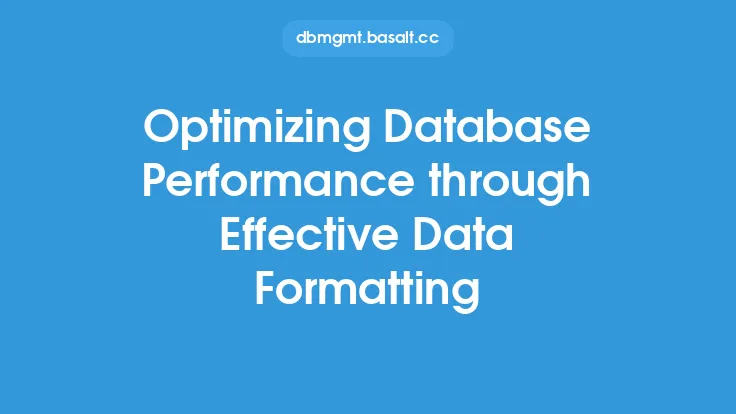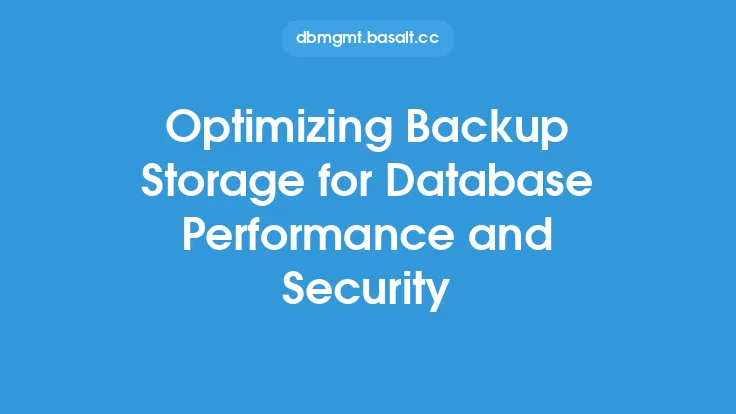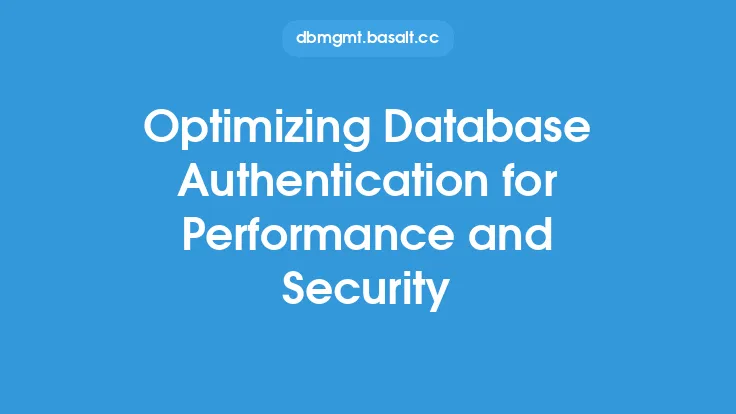Optimizing database performance is crucial for effective threat detection, as it enables security teams to quickly identify and respond to potential security incidents. A well-performing database is essential for threat detection, as it allows for the efficient processing and analysis of large amounts of data. In this article, we will explore the importance of optimizing database performance for threat detection and provide guidance on how to achieve optimal performance.
Introduction to Database Performance Optimization
Database performance optimization is the process of improving the speed and efficiency of a database, allowing it to handle a high volume of transactions and queries without compromising performance. This is particularly important for threat detection, as security teams need to be able to quickly analyze large amounts of data to identify potential security incidents. A slow-performing database can lead to delayed detection and response, allowing threats to persist and cause damage.
Key Factors Affecting Database Performance
There are several key factors that can affect database performance, including hardware, software, and configuration. Hardware factors such as processor speed, memory, and storage can all impact database performance. For example, a database running on a server with insufficient memory may experience performance issues due to the need to constantly swap data in and out of memory. Software factors such as the database management system (DBMS) and operating system can also impact performance. For example, a DBMS that is not optimized for the specific use case may lead to performance issues. Configuration factors such as indexing, caching, and query optimization can also significantly impact database performance.
Optimizing Database Configuration for Threat Detection
Optimizing database configuration is critical for effective threat detection. This includes configuring the database to optimize query performance, ensuring that the database is properly indexed, and configuring caching to reduce the load on the database. Additionally, configuring the database to optimize storage and retrieval of security-related data is essential for effective threat detection. This may include configuring the database to store security-related data in a separate partition or table, and optimizing queries to quickly retrieve this data.
Indexing and Query Optimization for Threat Detection
Indexing and query optimization are critical for effective threat detection. Indexing allows the database to quickly locate specific data, reducing the time it takes to execute queries. Query optimization involves optimizing the queries used to retrieve security-related data, ensuring that they are executed efficiently and effectively. This may involve using techniques such as query rewriting, indexing, and caching to improve query performance.
Database Storage and Retrieval Optimization
Database storage and retrieval optimization is also critical for effective threat detection. This includes optimizing the storage of security-related data, ensuring that it is stored in a way that allows for quick retrieval. This may involve using techniques such as data compression, data encryption, and data partitioning to optimize storage and retrieval. Additionally, configuring the database to optimize retrieval of security-related data is essential, including configuring the database to use optimal query plans and indexing strategies.
Monitoring and Maintenance for Optimal Database Performance
Monitoring and maintenance are critical for ensuring optimal database performance. This includes monitoring database performance metrics such as query execution time, disk usage, and memory usage. Additionally, performing regular maintenance tasks such as backups, indexing, and statistics gathering is essential for ensuring optimal database performance. This helps to identify potential performance issues before they become critical, allowing for proactive optimization and tuning.
Best Practices for Optimizing Database Performance
There are several best practices for optimizing database performance, including:
- Regularly monitoring database performance metrics
- Performing regular maintenance tasks such as backups and indexing
- Optimizing database configuration for the specific use case
- Using indexing and query optimization techniques to improve query performance
- Configuring the database to optimize storage and retrieval of security-related data
- Using techniques such as data compression and data encryption to optimize storage
- Configuring the database to use optimal query plans and indexing strategies
Conclusion
Optimizing database performance is critical for effective threat detection. By understanding the key factors that affect database performance and optimizing database configuration, indexing, and query optimization, security teams can ensure that their database is performing optimally. Additionally, monitoring and maintenance are critical for ensuring optimal database performance, allowing for proactive optimization and tuning. By following best practices for optimizing database performance, security teams can ensure that their database is able to quickly and efficiently process and analyze large amounts of data, enabling effective threat detection and response.





